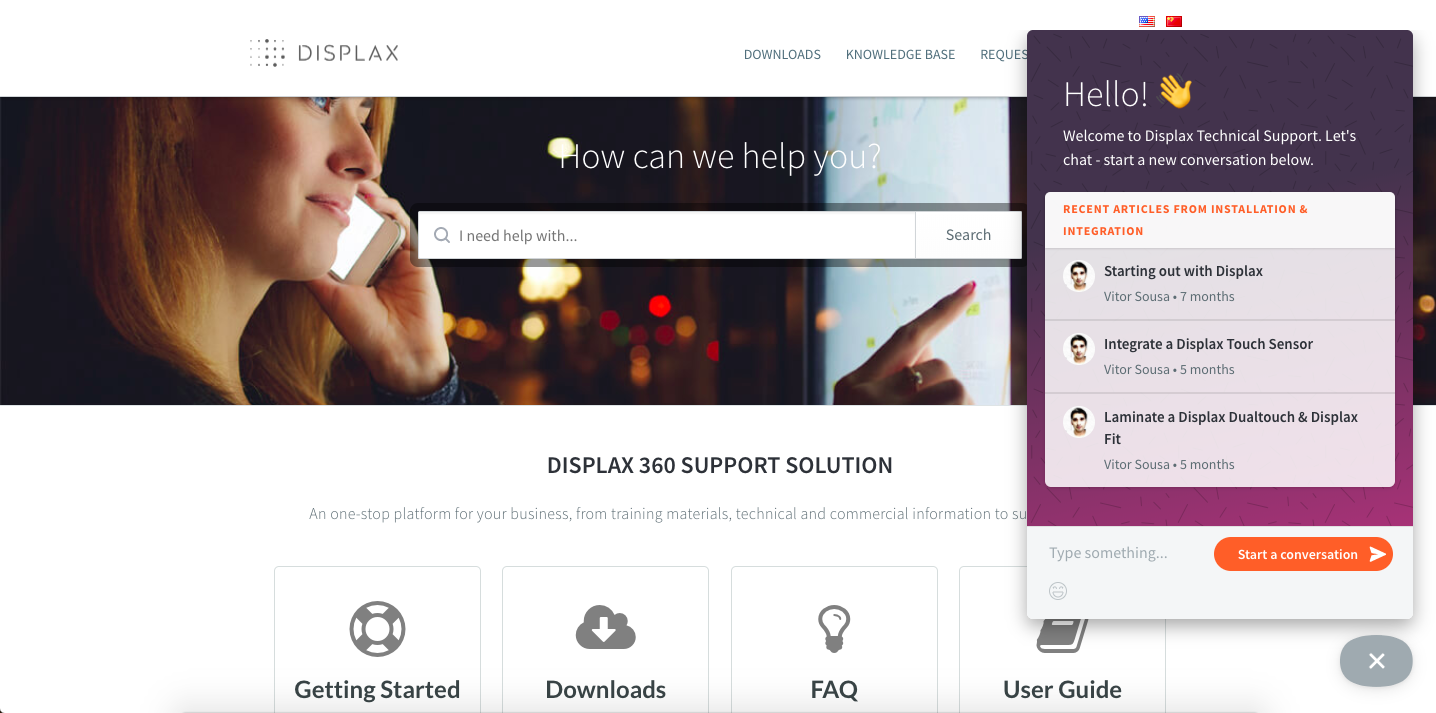In our free open source ticketing system, conversations with customers were spread across multiple inboxes, from Skype to email, to live chat. Silos existed and this made it difficult to have customer context and help our customer’s important requests.
These conversations were captured in an open source help desk—that we built! It was not working well and it needed to change.
We were missing customer history and our metrics weren’t a useful guiding tool.
They showed that we were struggling to hit our first response time (FRT) goals, but that wasn’t true. This ticketing system had no concept of business hours so our small team would have to work around the clock to make our help desk metrics happy! This wasn’t ideal.
The data was telling me we weren’t doing a great job, but my intuition was telling me something different.
Not to mention the number of bugs that were cropping up! As Head of Support, I was responsible for customizing and building features into our open source help desk. Fixing bugs became a big time investment and was tearing me away from helping customers.
That is not the main goal of support. You have to be focused on customers and not on the system. It was time to move past open source help desk software and purchase a solution.
Why we ditched an open source ticketing system and chose Messenger to power our business
An open source ticketing system would appear to be the obvious support solution for a small support team like ours. We manufacture the special projected multitouch film (PCAP) used for touch screens.
As Head of Support at Displax, I have a duty to keep customers happy. We’re an important part of the company: we are responsible for reporting any issues to Production and R&D, and our insights drive constant improvement for product development.
But we learned (the hard way!) that choosing the wrong ticketing system can be a foe more than a friend.
Moving to Kayako Messenger from our open source chat tool transformed the conversations we have with our customers. We’ve been more productive than ever before, and our customers love us!
Implementing Kayako Messenger (even for a small support team) will increase the happiness and positively affect the loyalty of your customers, especially as it finally makes live chat a scalable solution—even as a team of two support agents.
From choosing Kayako as our support tool, this is what we’ve learned:
- Our support team now adds even more value to the business in terms of customer insights and feedback
- Customers are happier with our support and happier with our products: we are selling now more and making more money.
- We are more productive than ever before, working in a much more organized way.
Whilst our workflow changed, we wouldn’t go back to the previous system—even though it was free!
Support now adds value to the business
The Support department is the hub of the company. We’re passionate about catering to our production line and ensuring we prevent bad shipments. We interact and own the majority of information from customers. The feedback we collect directly influences our product development. Every feature we develop originated from customer feedback through the support team.
We’ve made the process easy by using tags and special reports in Kayako. We hand off the data to our product development team, who can prioritize what they’re going to work on next.
Our customers love speaking to us on Messenger
Before Kayako we were getting 45 live chat requests a week, but now we’re up to 70 conversations. You might think doubling support load would be a problem, but with Kayako, it’s easy to manage.
Customers aren’t coming to us with problems, but they’re asking more questions. They are happy to have more ways to connect with us. We’re closer to our customers than ever before.
One of the advantages we discovered after using Kayako is that we no longer need to use external tools like Skype, helping keep everything in one place.
With Messenger we’ve noticed customers will happily stick around to resolve their problem quickly. With email we saw customers would send in their issue and not check their inbox for days before replying, then the conversation would span over a few days. But with Messenger we are able to close conversations quickly because customers are happy to interact with us in real-time.
Kayako Messenger has improved how we work: We’re more productive
Our process for handling support hasn’t changed, but one major advantage is that I am now back on the Support team and not spending my time developing the open source ticketing system.
We have more customers contacting us on Messenger. Customers see those three dots and find it easier to get in contact with us. Live chat now accounts for 30-40% of customer interactions, because we’re much faster to answer customer questions.
Messenger’s engagement rules has helped my team be more proactive. We use engagement rules to see if a customer is has been on a page more than 10 minutes or they have viewed 3-5 pages on our help center, indicating that they might need some extra help.

We’ve rescued our KPIs and performance metrics
Kayako’s reporting functions and tracking have made our KPIs much more accurate when measuring quality control.
Before Kayako, getting reports was a challenge. We could not get information on our biggest problems. I had to build my own reports, but the metrics were wrong because the open source help desk didn’t have the concept of business hours. Having the correct metrics helped improve our quality.
Generally, we aim to close or resolve a case in 5 days. We track first response time (FRT) and ensure every conversation is replied to within 24 hours (although we aim for 15 minutes), and the tagging and reporting function has improved the way we inform the product team about product failures in the field.
We are now experimenting with Kayako’s time tracking feature to measure how long our agents actually spend on Messenger conversations, which will help us to set some goals to be even more productive.
Upgrading from an open source ticketing system is actually stress free
Switching your support system from one provider to another can be nerve-wracking. For Displax, we made the decision to choose our first paid tool.
Upgrading from open source software was a great choice. We were suffering from many problems:
- A lot of time was spent developing the tool we were using, not helping customers. You have to be focused on customers, not on building the system.
- Our metrics were not helpful because our tool had no concept of business hours. With Kayako, having the correct metrics has improved the quality of support we offer customers.
- Hosting the tool on our servers caused a lot of headaches: I had to go into the server room and manually see what was happening! With a cloud solution, we don’t have that issue anymore.
Our evaluation process was thorough. We were looking at 10 support tools. We reduced that to 5, then narrowed it down to 3. We looked at reviews and testimonials, and we reached out for tailored help on our buying decision. The price didn’t matter at this point, we wanted the correct tool that would help us grow and improve our business.
We were let down by the biggest provider—no feedback or contact. The other contender was a difficult conversation and communication was not clear.
Kayako was an easy choice because the support team were so helpful. An added bonus was live chat included in all plans, without having to purchase a separate product or addon like other providers.
Free open source help desk software might not work for your team
When you’re a small support team operating on a small budget, a free ticketing system can be alluring, but the cost is customer happiness. An open source help desk can pull you away from supporting customers because you’re so busy building out your own system.
Now we’re using Kayako, we’ve found that live chat doesn’t need to be a lonely island or have a dedicated team handling live chat. It can be an all-in-one solution to support a worldwide, market-leading business accomplished by a small team of two.
Pushing conversations to Kayako Messenger has helped us answer cases quicker and we’re increasing customer happiness. Customers are saying they are really happy with the support. Coincidence or not, we are selling more and making more money.
Reduce friction for customer service and deliver effortless experiences to your customers today using Kayako. Sign up for a 14-day free trial.

